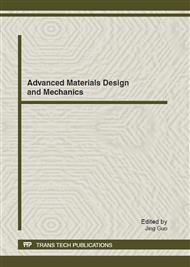p.74
p.78
p.82
p.88
p.95
p.99
p.103
p.107
p.111
Effects of Environmental Parameters on Marine Corrosion of Aluminium Alloys
Abstract:
The marine corrosion of aluminium alloys, AA1100 and AA6061 was investigated in term of the transient of the open circuit potential and polarization behaviors in a simulated marine condition. The pitting potential increased with dilution ratios of artificial seawater. The aluminium alloys passivated at lower potentials in the relatively concentrated solutions. The open circuit potential reached the passive state faster at lower solution temperature than that in higher solution temperature. The pitting potential of AA1100 and AA6061 seems independent of the test solution temperature, and the difference between pitting potential and the corrosion potential became smaller at the lower solution temperature. The involvement of the sulfate compound resulted in the increase in pitting potential and had no effects on the passive current density. The absence of the sulfate ions slowed down the formation rate of the passive film. Especially, the open circuit potential of AA6061 passivated at lower potential due to the absence of the sulfate ions.
Info:
Periodical:
Pages:
95-98
Citation:
Online since:
September 2012
Authors:
Price:
Сopyright:
© 2012 Trans Tech Publications Ltd. All Rights Reserved
Share:
Citation:


